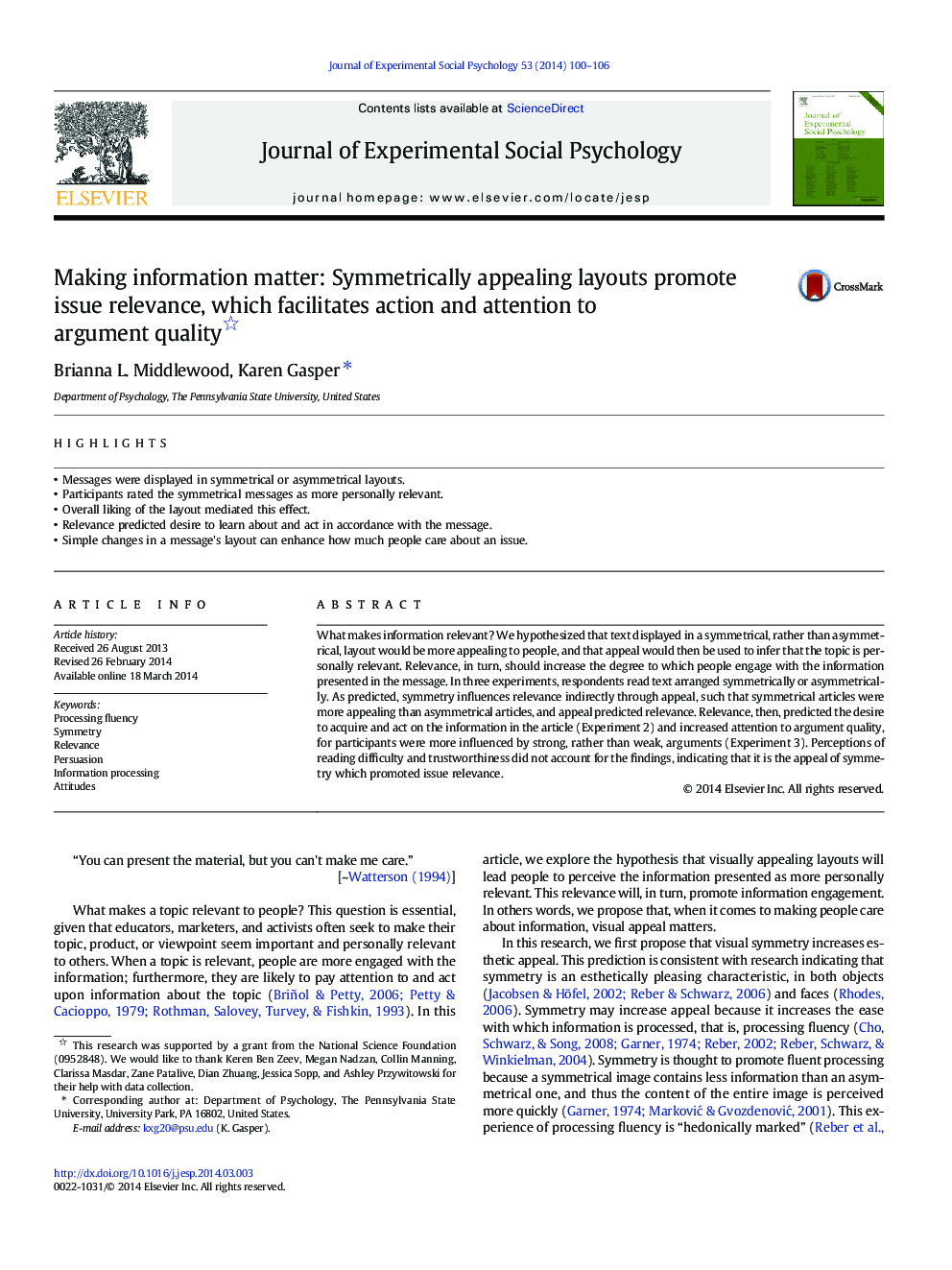| کد مقاله | کد نشریه | سال انتشار | مقاله انگلیسی | نسخه تمام متن |
|---|---|---|---|---|
| 947831 | 1475870 | 2014 | 7 صفحه PDF | دانلود رایگان |
• Messages were displayed in symmetrical or asymmetrical layouts.
• Participants rated the symmetrical messages as more personally relevant.
• Overall liking of the layout mediated this effect.
• Relevance predicted desire to learn about and act in accordance with the message.
• Simple changes in a message's layout can enhance how much people care about an issue.
What makes information relevant? We hypothesized that text displayed in a symmetrical, rather than asymmetrical, layout would be more appealing to people, and that appeal would then be used to infer that the topic is personally relevant. Relevance, in turn, should increase the degree to which people engage with the information presented in the message. In three experiments, respondents read text arranged symmetrically or asymmetrically. As predicted, symmetry influences relevance indirectly through appeal, such that symmetrical articles were more appealing than asymmetrical articles, and appeal predicted relevance. Relevance, then, predicted the desire to acquire and act on the information in the article (Experiment 2) and increased attention to argument quality, for participants were more influenced by strong, rather than weak, arguments (Experiment 3). Perceptions of reading difficulty and trustworthiness did not account for the findings, indicating that it is the appeal of symmetry which promoted issue relevance.
Journal: Journal of Experimental Social Psychology - Volume 53, July 2014, Pages 100–106
